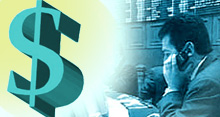The world economy is on the threshold of a change in its interest rate cycle. The first such change, in the United States, reflects a need to normalize interest rates at an ideal level of between 4% and 4.5%. Currently, the price of money in the U.S. is 1%, a historic low. It seems that the U.S. will emerge without damage to its economy. However, just when things are turning around and authorities are moving “patiently” from a lax monetary policy toward “measured” restrictions, the worst possible enemy for the world’s largest energy consumer [the U.S.] has reappeared -- rising petroleum prices.

Sign up to stay informed about our latest article releases.